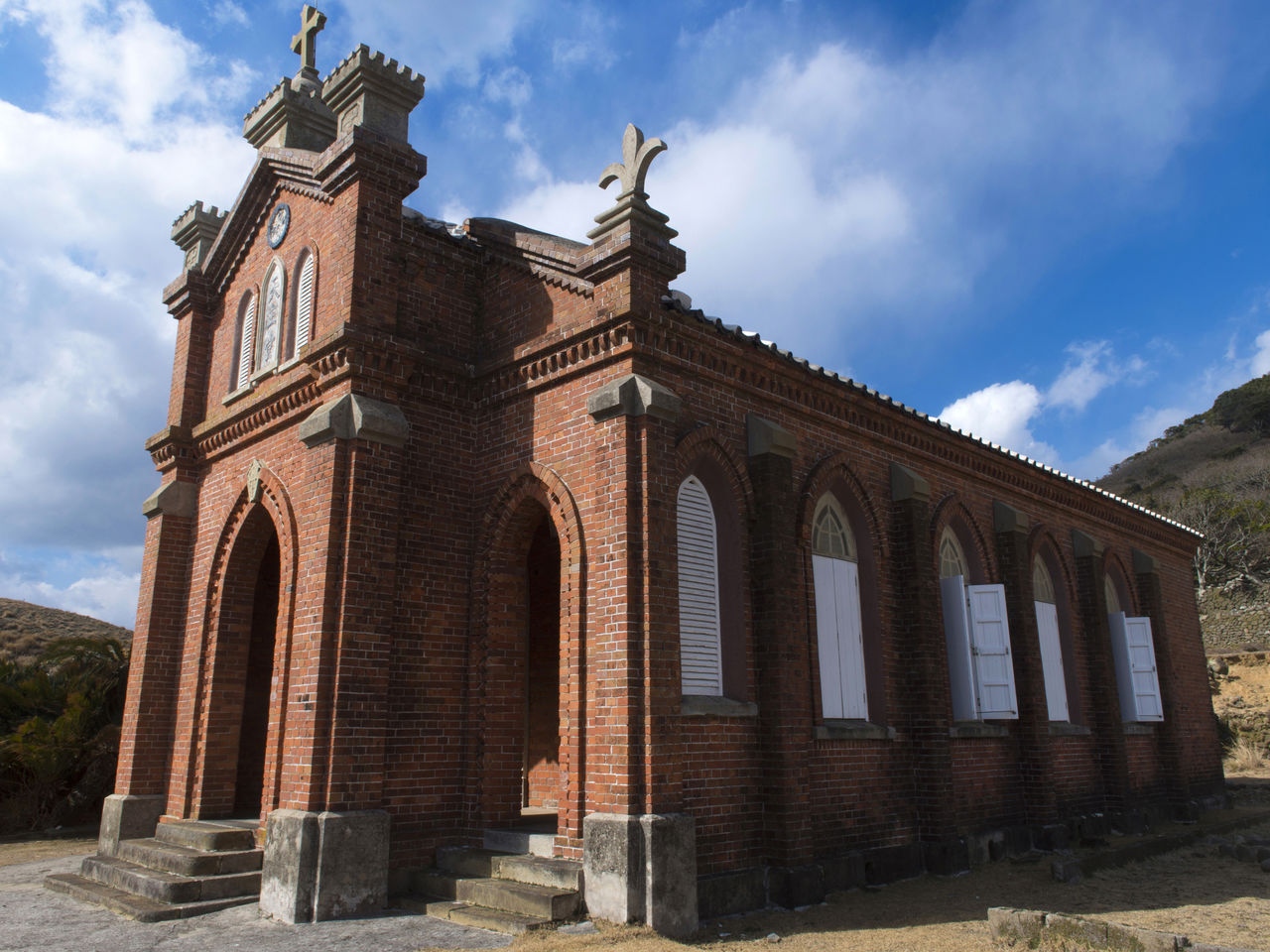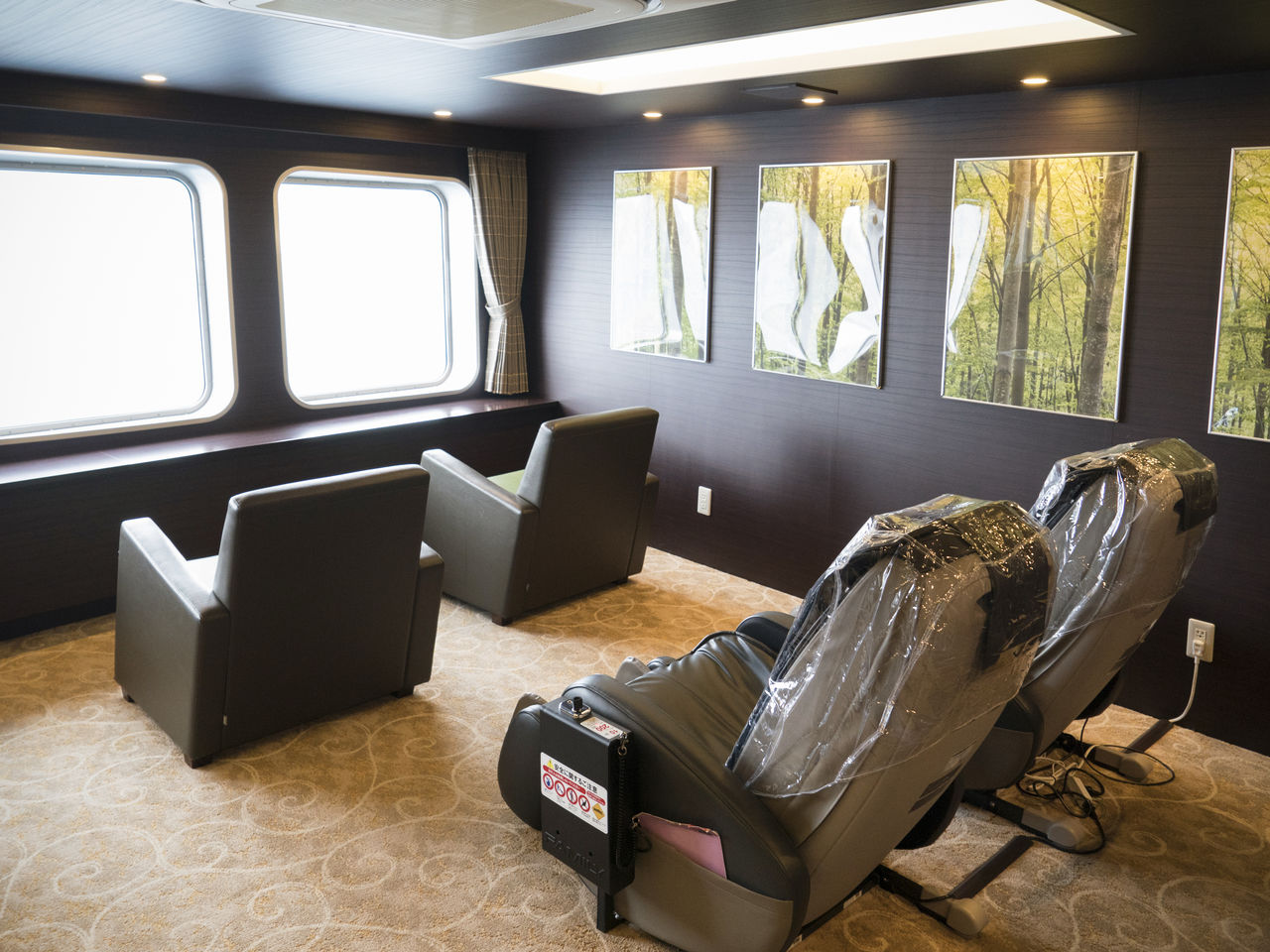
Touring Nagasaki’s Gotō Islands by Boat
Guideto Japan
- English
- 日本語
- 简体字
- 繁體字
- Français
- Español
- العربية
- Русский
About the Islands
The Gotō Islands, situated some 100 kilometers from Nagasaki Port on the westernmost edge of Kyūshū, Japan’s southernmost main island, are an archipelago of 140 islands, including several that are uninhabited. Virtually the whole chain is included in the Saikai National Park, a marine park famed for its beautiful island-dotted seascapes. Further attention has focused on the region lately with the inscription of the Hidden Christian Sites in the Nagasaki Region on the UNESCO World Heritage List in 2018.
Related article › Exploring Nagasaki’s Gotō Islands and the History of the Hidden Christians
 The former Nokubi Church, one of the sites inscribed on the UNESCO World Heritage List. There are around 50 Catholic churches scattered throughout the islands.
The former Nokubi Church, one of the sites inscribed on the UNESCO World Heritage List. There are around 50 Catholic churches scattered throughout the islands.
Administratively speaking, starting from the northern part of the island chain, Uku and Tera islands are part of the city of Sasebo. The town of Ojika consists of Ojika, Nozaki, and some smaller islands, and the islands Nakadōri, Kashira, and Wakamatsu constitute the town of Shin-Kamigotō. In the southern part, Fukue is the largest of the islands, and together with the islands of Hisaka and Naru makes up the city of Gotō. World Heritage sites are denoted not by individual site but by the islands or villages where they are found, which, going from north to south, are Nozaki, Kashira, the village of Egami on Naru, and Hisaka.
 Fukue, the largest of the Gotō Islands, is where the majority of visitors head. In addition to the numerous churches that dot the island, it has plenty of other sightseeing attractions, including natural sites like the Ōsezaki cliffs and the Ondake volcanic range. Fukue can be reached by regularly scheduled flights from Fukuoka and Nagasaki, which fly into Fukue Airport, popularly known as Gotō Tsubaki Airport.
Fukue, the largest of the Gotō Islands, is where the majority of visitors head. In addition to the numerous churches that dot the island, it has plenty of other sightseeing attractions, including natural sites like the Ōsezaki cliffs and the Ondake volcanic range. Fukue can be reached by regularly scheduled flights from Fukuoka and Nagasaki, which fly into Fukue Airport, popularly known as Gotō Tsubaki Airport.
 The Ōsezaki cliffs are a spectacular natural site on the Gotō Islands.
The Ōsezaki cliffs are a spectacular natural site on the Gotō Islands.
 Ondake volcano—more of a grassy knoll than a rocky peak—is 15 minutes by car from Fukue Airport.
Ondake volcano—more of a grassy knoll than a rocky peak—is 15 minutes by car from Fukue Airport.
Visitors to Kamigotō in the north usually base themselves on Nakadōri, the second largest of the Gotō Islands. Bandake, the highest point in the island chain, offers beautiful views of numerous islands, and the red surfaces of the Akadaki cliffs contrasting with the deep blue of the ocean are a spectacular sight. The island Kashira, one of the World Heritage sites, can be visited easily by car via a bridge connecting it to Nakadōri.
 Beautiful views of numerous islands are visible from Bandake, the highest point on the Gotō Islands.
Beautiful views of numerous islands are visible from Bandake, the highest point on the Gotō Islands.
Related article › The Natural Beauty and Historic Churches of the Gotō Islands (Video)
Best Touring Route
The islands can be reached by air, but most people travel by ferry or high-speed jetfoil, which depart from various Kyūshū ports. Travel time and itinerary will vary depending on which method is used to get there. The three main options are described below.
1. Take the Overnight Ferry from Hakata
Nomo Shōsen operates the Taiko overnight ferry from Hakata Port to Fukue, with a few stops along the way. Hakata Port is just a 10-minute bus or taxi ride from Tenjin in central Hakata. Departure time is 11:45 pm, which leaves plenty of time to enjoy nighttime entertainment in Tenjin or Nakasu.
The ferry can be boarded starting at 9:45 pm, two hours before departure, which makes it convenient for families with children or those who aren’t interested in nightlife. Boarding early gives time to settle in and get a good night’s sleep in preparation for the next day’s sightseeing.
 The Taiko overnight ferry connects Hakata with the Gotō Islands.
The Taiko overnight ferry connects Hakata with the Gotō Islands.
The ferry stops at four islands along the way: Uku (arrival time 3:55 am), Ojika (4:40 am), Nakadōri (5:40 am), and Naru (7:25 am), before reaching its final destination of Fukue at 8:15 am, making it a convenient way to island-hop. To make the voyage comfortable for everyone, the ferry amenities include a children’s play area and a relaxation room.
 The relaxation room on the Taiko is equipped with massage chairs.
The relaxation room on the Taiko is equipped with massage chairs.
2. Tour World Heritage Sites from Nagasaki Port
Visitors wishing to tour Nagasaki’s Ōura Church, one of the sites included in the Hidden Christian Sites in the Nagasaki Region, should start their trip in Nagasaki. Nearby is the former Thomas Glover estate, included in the Sites of Japan’s Industrial Revolution, another World Heritage site. Thomas Glover was a Nagasaki-based Scottish businessman who played a key role in Japan’s industrialization prior to and during the Meiji period (1838–1911). The ferry departing from Nagasaki for the Gotō Islands passes by the giant cantilever crane at the Mitsubishi shipyards, a business whose predecessor Glover was instrumental in establishing. An additional suggestion is to visit Gunkanjima, the island home to the Hashima coal mine and another Meiji-era industrial site, which can be reached by tour boat leaving from a dock near the ferry boarding point.
 The Ōura Church, where “hidden Christians” revealed themselves in 1865.
The Ōura Church, where “hidden Christians” revealed themselves in 1865.
In addition to the ferry, Kyūshū Shōsen operates the Pegasus jetfoil, a waterjet-propelled hydrofoil out of Nagasaki port. The high-speed jetfoil reaches Fukue in about 90 minutes, compared to the 3-hour, 40-minute journey by ferry. This vessel is less affected by waves, making it perhaps the preferred mode of travel for those worried about seasickness.
 A jetfoil shoots across the water as though it’s flying.
A jetfoil shoots across the water as though it’s flying.
 The Pegasus offers a smooth, swift ride, but passengers must fasten seatbelts and cannot go out onto the deck.
The Pegasus offers a smooth, swift ride, but passengers must fasten seatbelts and cannot go out onto the deck.
3. Take a Ferry from Sasebo to Uku, Ojika, and Fukue
The Gotō Islands can also be reached from Sasebo, site of the Huis Ten Bosch (Dutch for “house in the woods”) theme park, which opened in 1992 to provide something of a taste of the Netherlands to visitors. Kyūshū Shōsen operates the Narushio, which calls at the northern islands of Uku and Ojika.
Related Tags
tourism World Heritage food church festival island Kyūshū Gotō Nagasaki






